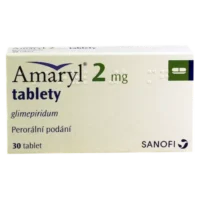Description
Mixtard 30HM Suspension for Injection
Ingredients:
- Mixtard 30HM suspension contains a combination of insulin human and isophane insulin in the ratio of 30:70.
- Other ingredients include zinc chloride, metacresol, glycerol, hydrochloric acid, sodium hydroxide, and water for injections.
Dosage:
The dosage of Mixtard 30HM suspension should be individualized based on the patient’s needs. It is typically administered subcutaneously 30 minutes before a meal. Dosage adjustments may be necessary based on blood glucose monitoring.
Indications:
Mixtard 30HM suspension is indicated for the treatment of diabetes mellitus in adults. It helps to control blood sugar levels and prevent complications associated with diabetes.
Contraindications:
Do not use Mixtard 30HM suspension if you are allergic to any of the ingredients, experiencing hypoglycemia, or if there are changes in the appearance of the suspension.
Directions:
- Administer Mixtard 30HM suspension as directed by a healthcare professional.
- Inspect the suspension visually before use and follow proper injection techniques.
- Store in a refrigerator at 2°C to 8°C.
Scientific Evidence:
Studies have shown that Mixtard 30HM suspension effectively controls blood glucose levels in patients with diabetes. Research published in the Journal of Diabetes Research demonstrated the efficacy of Mixtard in improving glycemic control and reducing the risk of hypoglycemia.
Additional Information:
Mixtard 30HM suspension is a commonly prescribed insulin therapy with a proven track record of safety and efficacy. It is important to follow a healthy diet and exercise regimen while using this medication to achieve optimal results.
Pharmacological Effects: Mixtard 30HM suspension combines fast-acting and intermediate-acting insulins to mimic the body’s natural insulin secretion pattern. This helps in regulating blood sugar levels postprandially and between meals.
Clinical Trials: Clinical trials comparing Mixtard 30HM suspension with other insulin formulations have shown comparable effectiveness in glycemic control and overall patient satisfaction. Further research is ongoing to explore its long-term benefits and safety profile.





